Net-Zero Strategy for Distributors—No Matter the Size of Your Enterprise
Net-Zero Strategy for Distributors—No Matter the Size of Your Enterprise
Net-Zero Strategy for Distributors—No Matter the Size of Your Enterprise
3 Mai 2022
Aptean Staff Writer
Climate change is very real—we cannot bury our heads in the sand any longer. Severe weather events like the California wildfires have convinced even the skeptics that something needs to be done. Science has shown that if we continue along the current path, the Earth’s natural oxygen will be depleted and all life as we know it will be in grave danger.
Scientists assert that we need to attain net-zero emissions by 2050 to limit global warming to no more than 1.5 degrees Celsius above pre-industrial levels. This means that businesses of all sizes have a crucial role to play to avert the impacts of climate change. United Nations Climate Change Panel stated that we need to reduce carbon dioxide emissions by about 45 percent by 2030. The overall goal is for net-zero emissions worldwide by 2050.
These statements are not meant to scare you, but instead to inspire you to take action.
Businesses need to act now—the only solution to global warming is a massive reduction in carbon emissions. To achieve this, experts have suggested that businesses need to become “carbon neutral.” Not only is it a sign of corporate responsibility, but it’s likely that tougher laws and new restrictions will soon come into play, so getting ahead in the transition to carbon neutrality will help you avoid fines and legal penalties in the future. For example, in the U.S., a group called the CEO Climate Dialogue is pushing for new legislation to start a carbon tax, which, if it passes Congress, can go into effect as soon as 2024.
It will require some effort; but no matter what size your company is, you can take steps to move toward “net zero”. It will be a tough road to carbon neutrality. Nonetheless, outside of the initial costs, becoming a green business will ensure future success. Some of you may already have a sustainability strategy in play; but if complete carbon neutrality seems unattainable for your enterprise, the article below will give you a road map.
What Is Net Zero?
What do we mean when we talk about the term “net zero”? Achieving net zero emissions is about balance. It refers to achieving equilibrium between greenhouse gas (GHGs) emissions produced and greenhouse gas emissions removed. Think back to your high school math classes, where you had to use quadratic equations to solve for zero. Unlike quadratic equations, however, you know what the factors are and what you need to do to get the correct answer. At its core, net zero is simple: no more greenhouse gas can be added to the atmosphere in any given year than is taken out.
Getting to net zero doesn’t mean that you absolutely cannot create any carbon emissions—instead, it means that you must use carbon offset plans to reduce those emissions by the same amount. Let’s say you are working on moving your distribution fleet to electric, but you cannot afford to do it all at once. To offset the GHGs from your remaining vehicles that run on internal combustion engines (ICEs), you work with local and state governments to start a reforestation project.
The initial costs of a carbon offset initiative might be formidable but think about this. Over 50% of consumers have said that corporate responsibility and sustainability are extremely important to them, while another 33% have stated that they would not buy from companies that did not show environmental stewardship. Those attitudes are even more pronounced among younger millennials and Gen Z consumers. As a distributor, it behooves you to embrace sustainable programs now to keep the customers you have and to impress the next generation of buyers. Losing customers is not something anyone can afford, so the long-term cost of net-zero more than compensates for the investment.
Below, we set out an achievable three-step plan for small- to medium size distribution businesses to attain a carbon-neutral enterprise.
Calculate Your Total Carbon Emissions and Set Reasonable Targets
The first step in any green project is knowing where your carbon emissions come from; after all you cannot change what you don’t measure. So, if you want to find ways to lower your company’s emissions, you need to calculate them. There are several GHG calculators out there, but two of the best sites are the University of Berkeley’s site, which not only helps you figure out how many tons of GHGs your company creates per year, but gives you steps you can take to mitigate it. The SME Climate Hub also has a calculator, as well as a variety of helpful resources for SMEs that want to work on making their company more sustainable.
Studies have shown that often the biggest offenders for emissions may not be the first place to start. This is because emissions often come from Scope 3 emissions elsewhere in the value chain and are not under your direct control. That doesn’t mean that you should ignore them—if you know that one of your suppliers is blatantly flouting local environmental regulations, it may be time to find another supplier.
However, once you have tracked your emissions and found the root causes, you can act. For example, if you own a fleet of trucks, you can help reduce emissions during deliveries by investing in electric vehicles and route optimization software. Routing software not only provides complete visibility for your supply chain, but it also reduces the number of deliveries your team must make in a day. If you aren’t ready to make the switch to a fully electric fleet, then implanting route optimization is particularly helpful because it makes the most out of the vehicles you already have. So not only can you reduce emissions, but also access significant operational benefits too.
To reduce Scope 1 emissions, that is, those emissions for which your enterprise is directly responsible, you can start with green practices in the office. Perhaps you could make the switch to solar energy, whether throughout the company or simply to fuel your warehouses. You might change your packaging to recyclable and sustainable containers. Whatever method you choose, start small, set goals and stick to them.
Reduce Waste and Inefficiency
Using resources more efficiently is the easiest step to achieve carbon neutrality. And the simplest way to achieve that is to use an industry-specific distribution ERP, because that provides a central platform for resource management and communication. But the role of an ERP in sustainability goes far beyond efficiency. A robust ERP for your vertical does three main things:
Keeps operations lean: One of ERP’s biggest advantages is that it reduces waste. Waste in distribution isn’t just physical products. A distribution ERP allows you to optimize resources, which in turn reduces energy, product and material waste and labor costs. With ERP, each department gets an overview of its activities so they can identify the opportunities to cut down costs.
Optimizes the supply chain: A distribution ERP facilitates supply chain optimization in one key way—it enables transparent communication and eliminates information silos. And if you have your own fleet of trucks, then a transport management system (TMS), gives you updated routing information in real-time, which feeds back to the ERP. Even if delays occur, you will know as it happens so you can communicate to your customer immediately. You get updated data on shipments and all parties in the supply chain gain greater visibility when products are in transit. You also get complete traceability, because you will know which products contain recalled parts or raw materials. This saves time and decreases waste.
Enables demand planning and forecasting: A distribution ERP with demand planning and forecasting tools gives you both historical sales data and sales forecasts, which optimizes purchasing decisions. Functions like supply plans and automated purchase and supply orders streamline the inventory management process. Your distribution ERP has already synchronized all functions of sales, supply and purchasing, so you get precise forecasting meaning you can react swiftly to market changes, improve overall inventory management and increase customer service levels. The benefit is that demand planning at this level virtually eliminates waste because your orders will be accurate, and your warehouse team won’t be wasting space on products that don’t sell.
Offset Emissions—and Get Employees Involved in the Effort
You already know that to remain competitive, you are going to have to adopt sustainability initiatives now. For small- to medium-size enterprises (SMEs), the cost to start such strategies can be formidable. Nonetheless, the costs of getting fines or legal penalties will be even higher. Get your staff and stakeholders involved, and come up with short-term solutions, as well as long-term goals. Chances are, if your employees are involved from the outset in helping the company meet their green goals, they have a higher chance of succeeding.
If you cannot afford to make organizational changes right now, like buying solar energy panels for your business, carbon offsets might be an option. Carbon offsets allow companies to trade an offset for other activities. Essentially, with an offset you are funding a project that reduces greenhouse gas emissions.
This is not a permanent solution—you will have to make structural modifications. But if the idea of making massive alterations to meet legislative restrictions is too much for your SME, carbon offsets can negate the GHGs your company currently emits. As a bonus, most offsets are tax-deductible, so be sure to include them into your annual budget.
Tools like the Carbon Offset Guide has a variety of resources on climate change and business. This guide can also help you find offset projects near you.
Sustainability in the distribution industry is no longer optional. The world is faced with the overexploitation of resources, and climate change is very real. But it needn’t break the bank. Using technology like an specialized distribution ERP and robust routing and scheduling software will help drive your sustainability efforts and help you manage costs as you focus your efforts toward achieving net zero.
Ready to make your enterprise more sustainable? Find out how, now.
Related Articles
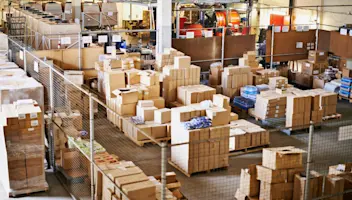
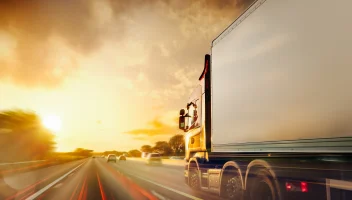
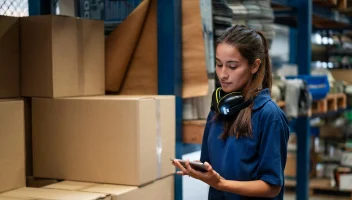
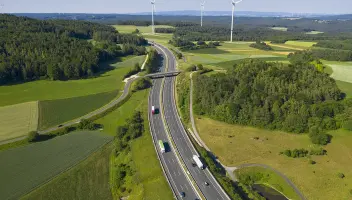
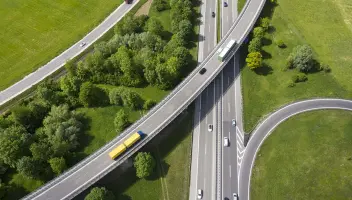
Commencez à transformer vos opérations de distribution
Prêt à faire passer votre entreprise à la vitesse supérieure ? Vous pouvez compter sur nous.



